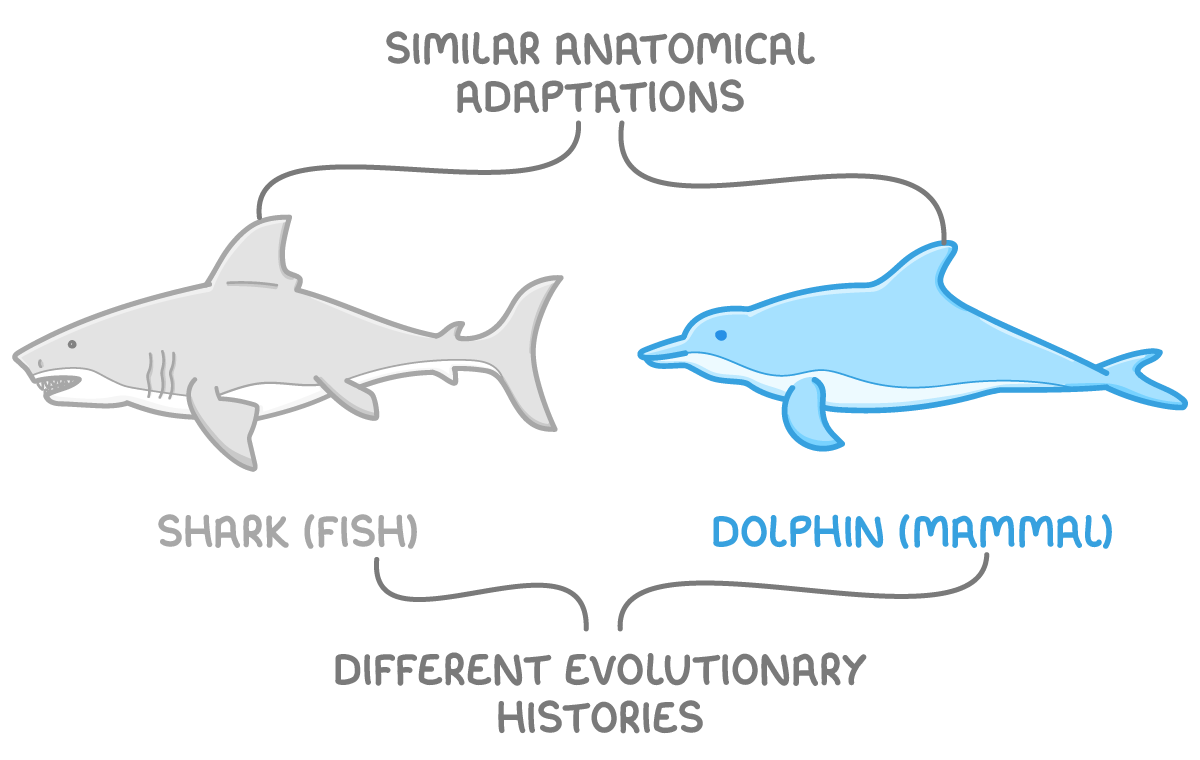Adaptations
This lesson covers:
- What adaptations are
- The differences between anatomical, behavioural, and physiological adaptations
- How adaptations provide evidence for convergent evolution
What are adaptations?
Adaptations are inherited characteristics that enhance an organism's ability to survive and reproduce in its specific environment.
The three adaptation categories are:
- Anatomical - Physical structures, both internal and external.
- Behavioural - Activities and responses, whether inherited or learned.
- Physiological - Internal biological functions.
It's common for adaptations to span several categories. For example, a peacock displaying its colourful tail feathers during mating rituals showcases both anatomical and behavioural adaptations.
Anatomical adaptations
Anatomical adaptations are the physical attributes that aid an organism's survival.
Examples of anatomical adaptations include:
- Body coverings - Fur, feathers, scales protect organisms and support their survival.
- Camouflage - Organisms with colouration that blends into their environment are less likely to be detected.
- Mimicry - Some species imitate the appearance of more dangerous ones for protection.
- Teeth - The shape of an animal's teeth are adapted to its diet.
Behavioural adaptations
Behavioural adaptations are actions that increase an organism's chances of survival and reproduction.
Examples of innate, instinctive behaviours include:
- Defensive responses - For example, opossums play dead and rabbits freeze to avoid detection by predators.
- Courtship displays - For example, male scorpions dance to attract mates.
- Seasonal actions - For example, migration helps birds access resources year-round and hibernation helps bears conserve energy when food is scarce.
Examples of learned behaviours include:
- Tool use - For example, sea otters use rocks to open shells, showing an ability to learn and apply knowledge to solve problems.
Physiological adaptations
Physiological adaptations are internal processes that give organisms an edge in survival.
Examples of physiological adaptations include:
- Venom - Used by snakes to immobilise prey and by plants to deter herbivores.
- Antibiotics - Produced by bacteria to outcompete rival species.
- Water storage - Desert frogs can survive for over a year without a water source by storing water in their bodies.
Evolution of analogous adaptations
Analogous structures serve similar functions but originate from different evolutionary paths.

For instance, both dolphins (which are mammals) and sharks (which are fish) have adapted to develop dorsal fins that help them swim, despite their distinct evolutionary lineages.
Convergent evolution occurs when unrelated species develop similar traits as they adapt to similar environmental challenges and selection pressures.